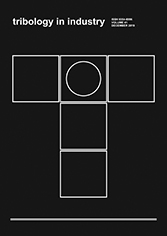Volume 40, No 4, 2018, Pages 654-669
Influence of Binder on Thermomechanical and Tribological Performance in Brake Pad
Authors:
B.S. Rajan, M.A.S. Balaji, K. Sathickbasha,
P. Hariharasakthisudan
DOI: 10.24874/ti.2018.40.04.12
Abstract:
The type of binder and its fraction in the brake pad material formulation plays a vital role in fulfilling the key requirements of friction materials (FMs). Three set of brake pads were fabricated with 10, 12 and 14 weight percentage (wt%) of Epoxy-Modified novalac Phenolic (EMP) resin and designated as DB10, DB12, and DB14 respectively. The characterization of resin and composites were done using standard techniques. The tribological tests were carried out on an Inertia Brake Dynamometer (IBD) following industry standards JASO C-406 and JASO C-427. The friction and wear behavior based on the rotor temperature, rotor speed, and pad pressure was analyzed. It was observed that DB10 showed 12.8 % more thermal stability, 37.01 % more fade resistance and 11.54 % improved recovery rate than DB14. DB14 showed high wear resistance at 100, 200 and 300 °C for the speed of 50 km/h.
Keywords:
Brakes, Friction Mechanisms, Friction Test Methods, Thermal Stability, TGA, Polymers (solid), Wear Mechanisms





